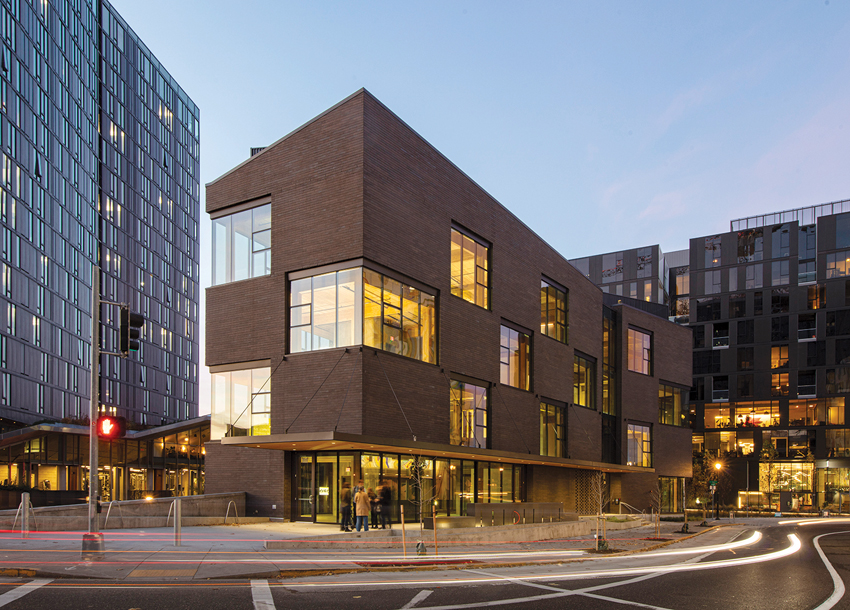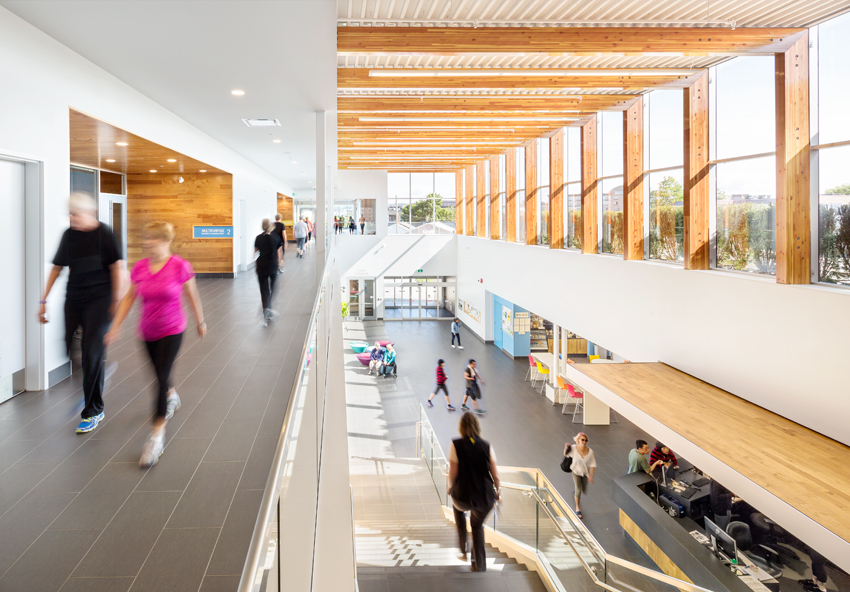Designing Beneficial Spaces for Living, Working, and Well-Being
Learning Objectives:
- Appreciate the role of architecture and material choice in designing buildings that promote occupant well-being.
- Identify four of the most common design approaches that recognize the positive connection between humans and nature.
- Explain the role of wellness-focused building standards, and recognize the overlap between occupant wellness considerations and existing green building standards.
- Discuss the ways in which buildings can be designed to help reduce stress, promote healing, support learning, improve employee productivity and satisfaction, and enhance retail customer experience.
Credits:
This course is approved as a Structured Course
This course can be self-reported to the AANB, as per their CE Guidelines
Approved for structured learning
Approved for Core Learning
This course can be self-reported to the NLAA
Course may qualify for Learning Hours with NWTAA
Course eligible for OAA Learning Hours
This course is approved as a core course
This course can be self-reported for Learning Units to the Architectural Institute of British Columbia
It is a common human reaction: We turn to nature in uncertain times. Nature nurtures, as they say. With the 2020 global pandemic and limited access to the outdoors it has meant for many, people are looking at their surroundings with new appreciation—and an increased desire for buildings that help them feel good as they spend more time indoors.

Photo: Martin Tessler
UniverCity Childcare Centre, Simon Fraser University, Burnaby, British Columbia,Canada
While we know that good architecture does not guarantee good health, evidence is growing that a well-designed building can lead to an improved overall sense of well-being for occupants. And, since wood has a natural connection with nature, there is increasing evidence that wood can contribute to the well-being of building occupants when it is left where it can be seen and even smelled.
This course explores the trend toward architecture that is designed to improve the well-being of building occupants.
Building Designs Must Adapt to Changing Market Needs
Occupant health and well-being is more important than ever, especially given the fact that Americans, on average, are currently spending approximately 90 percent of their time indoors.1 As a result, building professionals are seeing the need to rethink how we design, use, and occupy buildings.
COVID-19 is also changing the ways in which buildings are designed. For example, building teams are considering touchless entries, improved ventilation systems, and design features that allow people to spread out with renewed interest. But the increased focus on beneficial spaces is not only on occupant safety; designers are looking for ways to simply improve the way that people feel inside of buildings, even as they need to spend more time inside.
“The spaces where we live and work can have a significant effect on our physical and emotional well-being,” says Ricardo Álvarez-Díaz, founder and principal of Álvarez-Díaz & Villalón, a design firm based in San Juan, Puerto Rico, and Miami. “Thoughtful, innovative design can shape how we feel and what we experience within a physical space.”2
Designing for Wellness: The Power of Nature
Emerging research shows that communities are more apt to thrive when the buildings people occupy are intentionally designed with community wellness in mind. The built environment can have a big influence on the self-perceived well-being of occupants; visual warmth and comfort of an office building tells employees that they are valued, for example, and a warm and friendly entrance tells those who live in a multifamily building that they are welcomed home.
On its website, global design and engineering firm Atkins says, “More and more evidence and guidance is making its way from the medical and research world into the construction industry, highlighting the impact the built environment has on both our physical and mental well-being… Understanding the complexities and interconnected nature of [these] well-being parameters at the very beginning of a building project is the only way to deliver environments that maintain, at their heart, the well-being of those who inhabit them.”3
Certainly, impacts of factors like poor indoor air quality have been well-documented, proven by the increasing recognition of the importance of low-VOC surface treatments and other elements dictated by sustainable design initiatives like LEED. But architects are also recognizing the increasing importance of the overall design that supports human well-being.
This is particularly true for urban populations. The “Green Cities: Good Health” report from the University of Washington’s Urban Forestry Department presents the results of extensive research on the topic of stress, wellness, and physiology.4 “We may intuitively accept that urban nature is important for public health. [This website presents] supporting evidence, confirming intuitions and expanding our knowledge. Given the high population densities of urban areas, every bit of nearby nature has the potential to benefit hundreds to thousands of people daily…Living near green areas, having a view of vegetation, and spending time in urban natural settings can reduce stress and contribute to enhanced wellness for city dwellers.”
Can a Building Improve the Health and Well-Being of Its Occupants?
Humans have evolved through a deep connection with the natural world, and we still identify with nature today. We derive pleasure from being exposed to natural elements: outdoor views, fresh air, natural lighting, natural materials like stone and wood, landscape features such as plants and water, and natural shapes and forms. These and other elements are increasingly recognized as able to create an attractive, productive environment for people.
A variety of design approaches recognize the positive connection between humans and nature. These include evidence-based design, human-centered architecture, environmental psychology, and biophilic design.
The Center for Health Design defines evidence-based design as “the deliberate attempt to base building decisions on the best available research evidence with the goal of improving outcomes and continuing to monitor the success or failure for subsequent decision-making.”5 This design approach is often applied to health-care facilities, but it is applicable to many other building types too.
Human-centered architecture is an approach that aims to optimize the relationship between humans and buildings by putting people at the heart of the design process. It describes how design can positively influence the emotional outlook and well-being of the people who interact with a building. For example, it begins by identifying the experience that a building occupant should have, and then the space is intentionally designed to enable that experience.
Environmental psychology, sometimes referred to as the psychology of space, describes the relationship that people have with their surroundings. This discipline is based on the philosophy that building design and proximity to nature has a direct impact on how occupants feel about themselves and others.
The concept behind the innate, positive connection people have with nature is called biophilia. Since humans have a visceral and positive reaction to nature, architects use biophilic design principles to create a sense of well-being by appealing to the five basic senses—sight, sound, smell, taste, and touch—to create a safe, pleasant, and stimulating yet soothing environment.





















